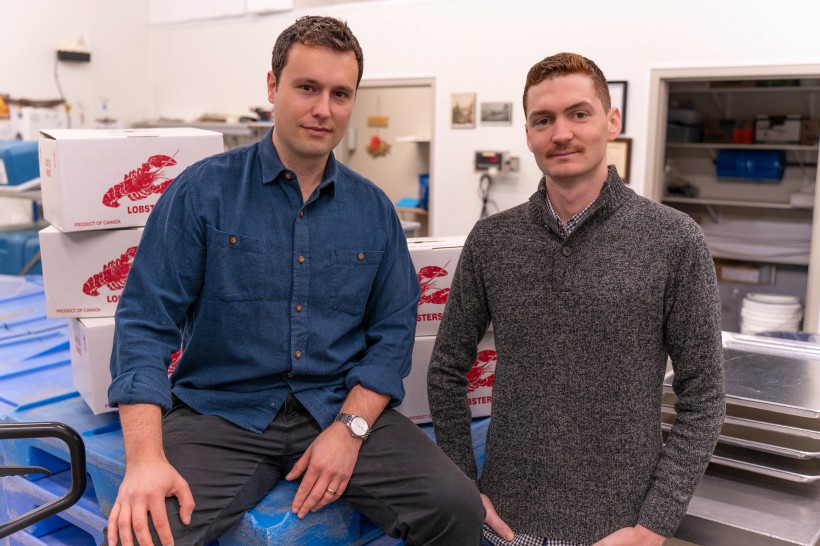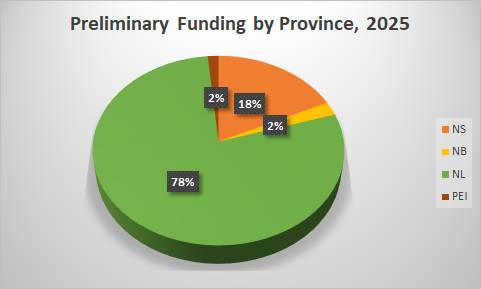A new bone cement being developed in Halifax will be used in the treatment of orthopedic patients. The developers aim to make treatment easier and more affordable, and open up a whole new market.
The new product is a glass ionomer cement, said Caitlin Pierlot, the CEO of Biofix Medical Technologies.
“GICs have been used for years in dentistry, and still are,” Pierlot said. “However, conventional GICs, which contain aluminum, can’t be used in orthopedic applications because aluminum release from the cement is neurotoxic, damages bone and has had fatal consequences in the orthopedic environment.”
Aluminum is not toxic when used in the mouth, she said.
The cement created by Biofix Medical Technologies is aluminum-free.
“Until now, no one has been able to make a GIC … without aluminum that has the handling properties and strength needed for orthopedic applications,” Pierlot said.
Biofix Wins BioInnovation Challenge
Many big orthopedic companies use bone cements that set by polymerization, a chemical reaction in which small molecules combine to form larger molecules that resemble the originals.
“The problem is that’s a 50-year-old technology that was grandfathered in, so it has not undergone the tight Federal Drug Administration approval process,” Pierlot said.
“It’s also toxic and clinicians don’t like it. It doesn’t have good handling properties. We asked clinicians what they would like in a bone cement and developed our product around their requirements.”
The Biofix cement is non-toxic and can be injected into the vertebrae of osteoporosis patients who have suffered a vertebral compression fracture, the most common fracture in people suffering from osteoporosis.
The potential market for the new product is vast and growing as populations age.
“There are now 700,000 such fractures a year in the U.S. alone. The number of people with osteoporosis or its precursor is predicted to increase to 61 million by 2020 in the U.S.,” Pierlot said.
“And it’s predicted that U.S. health care will consume 90 per cent of GDP by 2080. That’s unsustainable, obviously. Our minimally invasive procedure could cure patients in a way that would be inexpensive for hospitals and convenient for patients.”
The Biofix technology has been developed at Dalhousie University in Halifax by company co-founders Brett Dickey, now chief technology officer, and Daniel Boyd, head of the Minimally Invasive Interventional Materials laboratory. The work has been supported by an academic grant from the Atlantic Canada Opportunities Agency.
Pierlot joined the lab last year, soon after completing her PhD in biomedical engineering at Dalhousie.
“I wanted to transition from fundamental science to the industry side.
“I got involved to bring the biological side to the team. … A lot of the de-risking of the technology involves testing how materials will act in the body and how the body will respond.”
The company received a boost last month when it won Nova Scotia’s annual BioInnovation Challenge. Coming first meant a total of $45,000 in cash and services from the competition run by BioNova, the Nova Scotia Life Sciences association.
Biofix is seeking $1.3 million in equity investment, with the goal of applying for FDA approval by the end of 2017. After gaining approval, the company expects to start clinical trials and later gain regulatory approval in the European Union and Canada.
Pierlot, who was raised in East Dover, near Peggys Cove, said she has discovered biotech is her passion.
“The biotech sector is growing in Nova Scotia. It’s a great community. There’s lots of collaboration. … That’s characteristic of Atlantic Canada, and it’s one of the reasons I returned after doing my bachelor’s degree in mechanical engineering at McGill University.
“I loved Montreal, but I’m a Maritimer at heart. So I did my PhD here because I knew this was a growing sector. Lots of young entrepreneurs want to be here.”
She said the company’s next step is to incorporate within the next few weeks.










